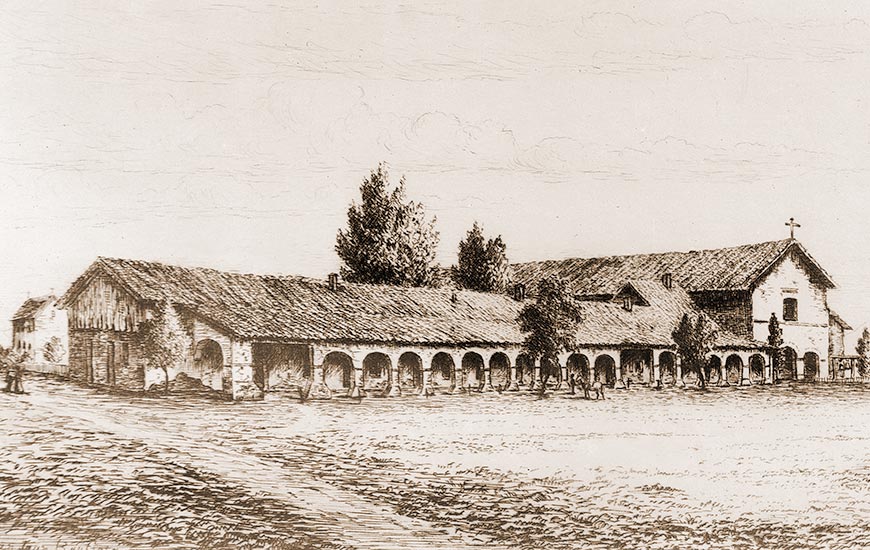“Henry C. Ford was best known for his paintings of the entire chain of twenty-one California missions. He was born in Livonia, New York in 1828, but he pursued his studies in Paris and Florence during the late 1850’s. He was a Civil War illustrator and veteran, and as soon as he was discharged from service, he settled in Chicago, Illinois. In Chicago, Ford became an accomplished landscapist, and was one of the founders of the Chicago Academy of Design in 1873. The studio that Ford kept in Chicago burned down in 1871. Due to his failing health, Ford moved to a milder climate, settling in Santa Barbara, California. In the summers of 1880 and 1881, he traveled by horse and buggy to each mission site south of Santa Barbara. On the mission grounds, Ford made pencil drawings and painted sketches. He was the first artist to make a set of mission images in two media, oil and etching. He went to New York to turn his renditions into etchings, which were inexpensive and could be easily duplicated. In 1893, he exhibited his mission etchings at the Chicago World’s Fair. Later in his life, Ford taught and continued to paint from his Santa Barbara home. He died in 1894, leaving behind the important historical contribution of his California mission paintings.” — unknown author.
“Located in the middle of the San Juan Valley, the mission sits right on the San Andreas fault! Although its location right on the fault was less dangerous than other locations, it accounted for many shaky days and nights. In October 1798 the shaking was so bad that the missionaries slept outside for the whole month. The earth shook as many as 6 times in one day, leaving many huge cracks in both the buildings and the ground. Since the mission population was growing so quickly when an earthquake destroyed the church in 1803 plans were already underway to build a larger church. Much of the interior was painted by Thomas Doak, a sailor from Boston who jumped ship in Monterey, thereby becoming the first Anglo-American resident in California. Although he was not a great artist, he did work for just room and board, and the colors he mixed were so durable that they continue to glow today. After secularization in 1835, the church continued to serve as a parish for the local town. After sustaining some damage from a quake in 1906, it was repaired and then suffered through some attempts at modernization. Fortunately, in 1949, the Hearst Foundation financed the restoration that restored it to its original form.” — unknown author.
Source: Wikipedia
Learn More
Visit USC Libraries and search for “Henry Chapman Ford”
